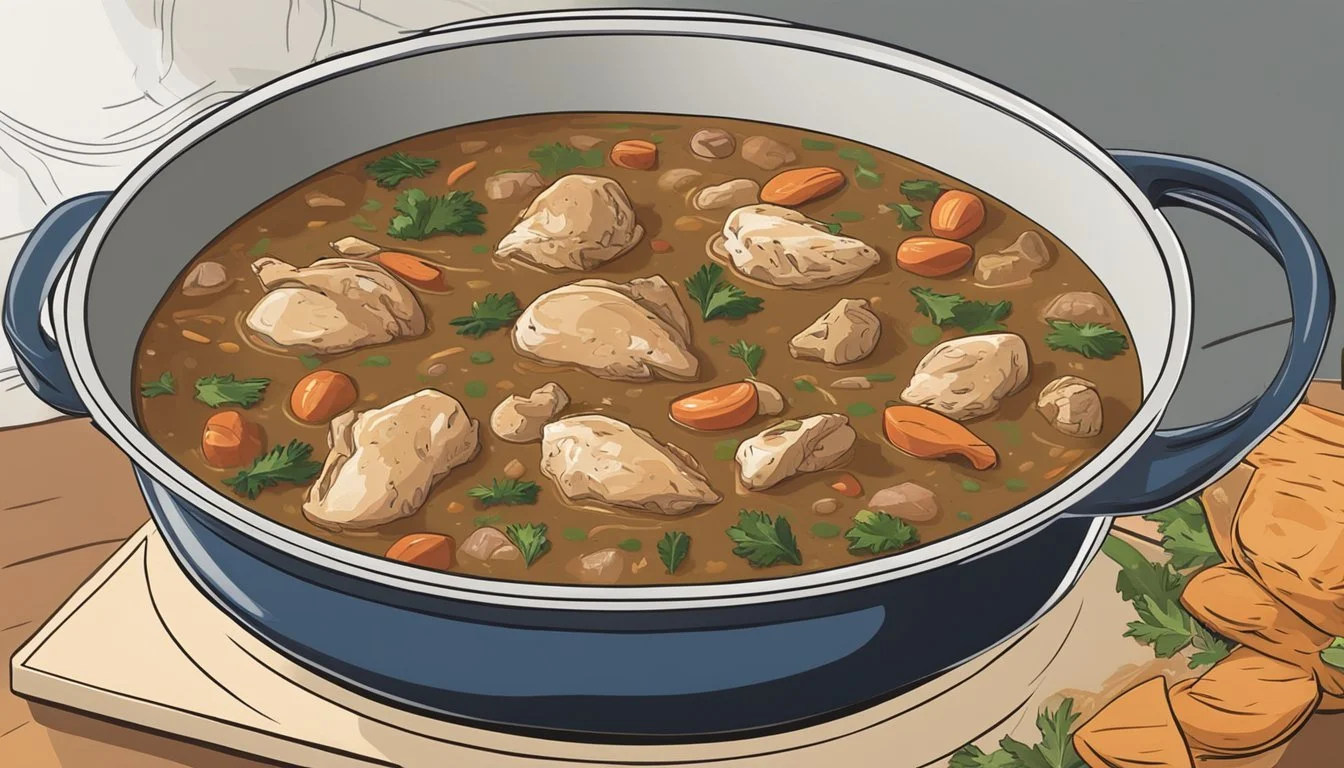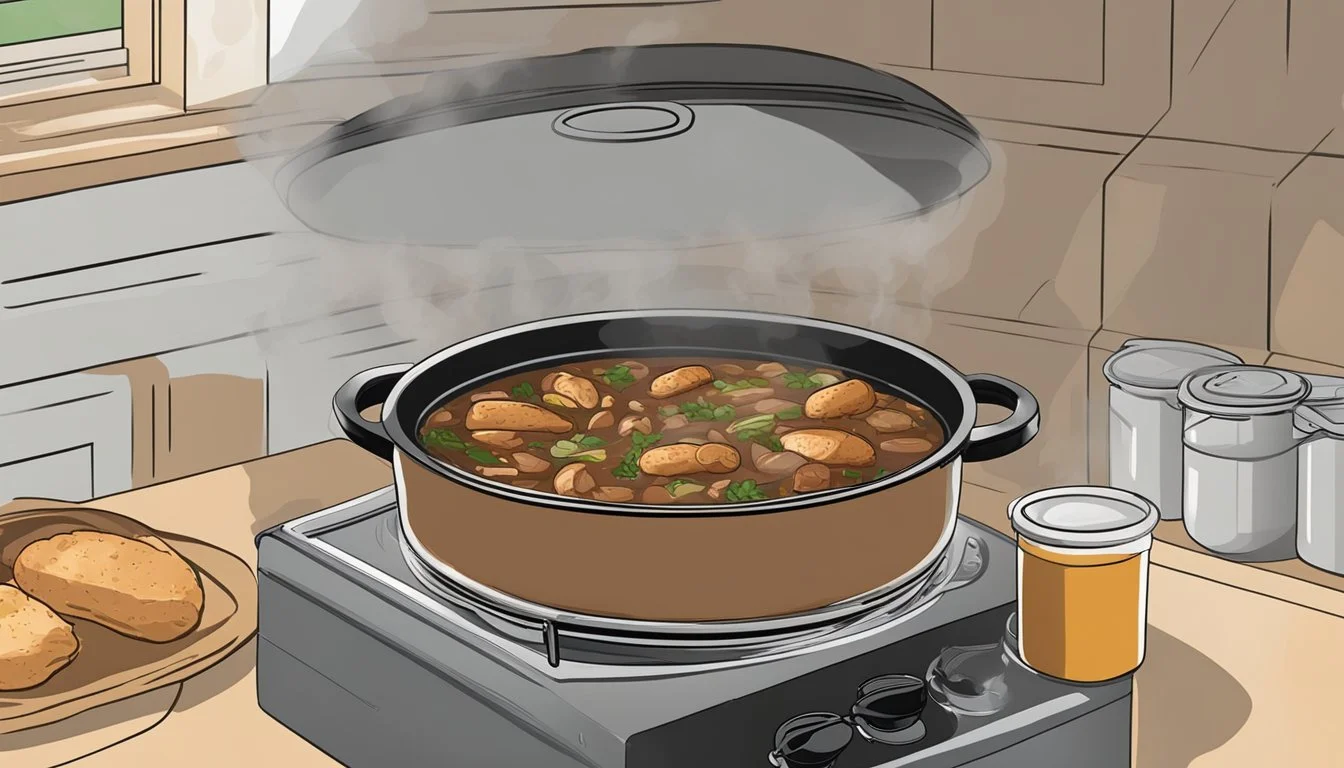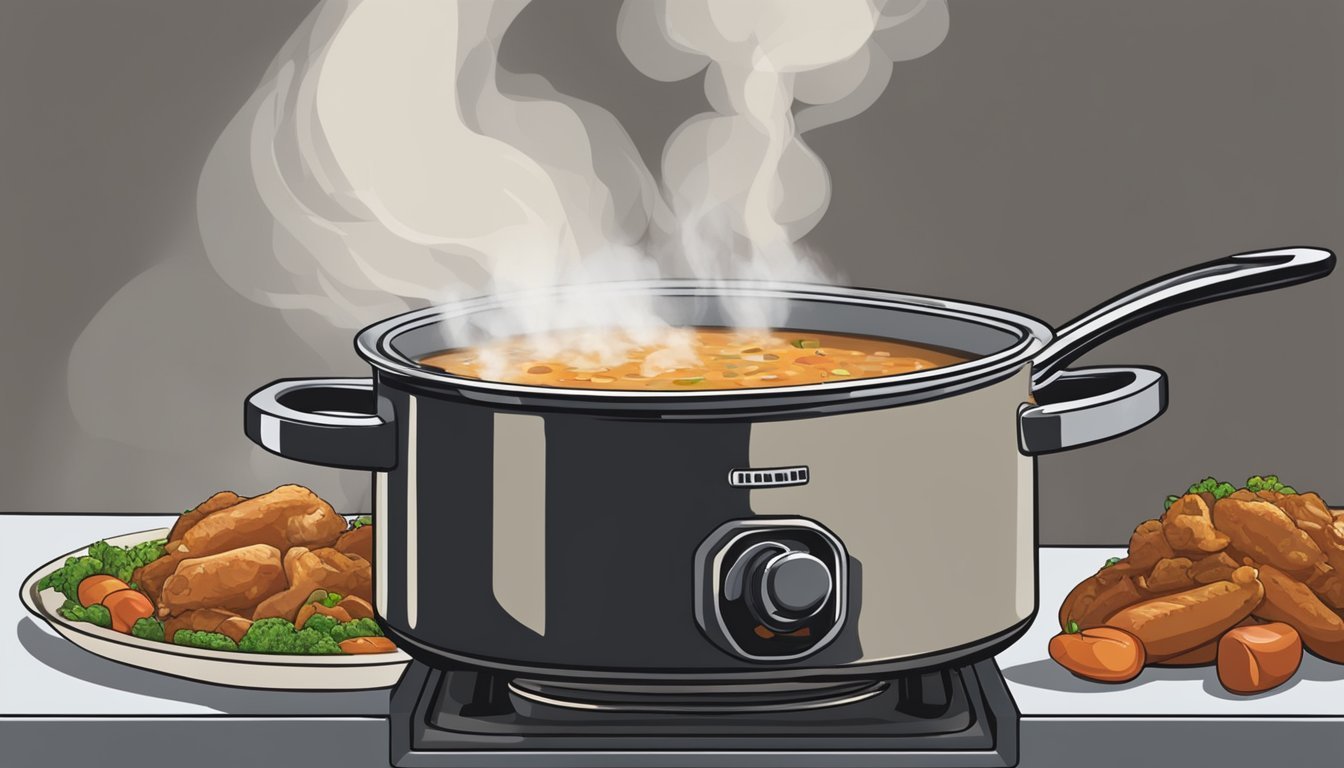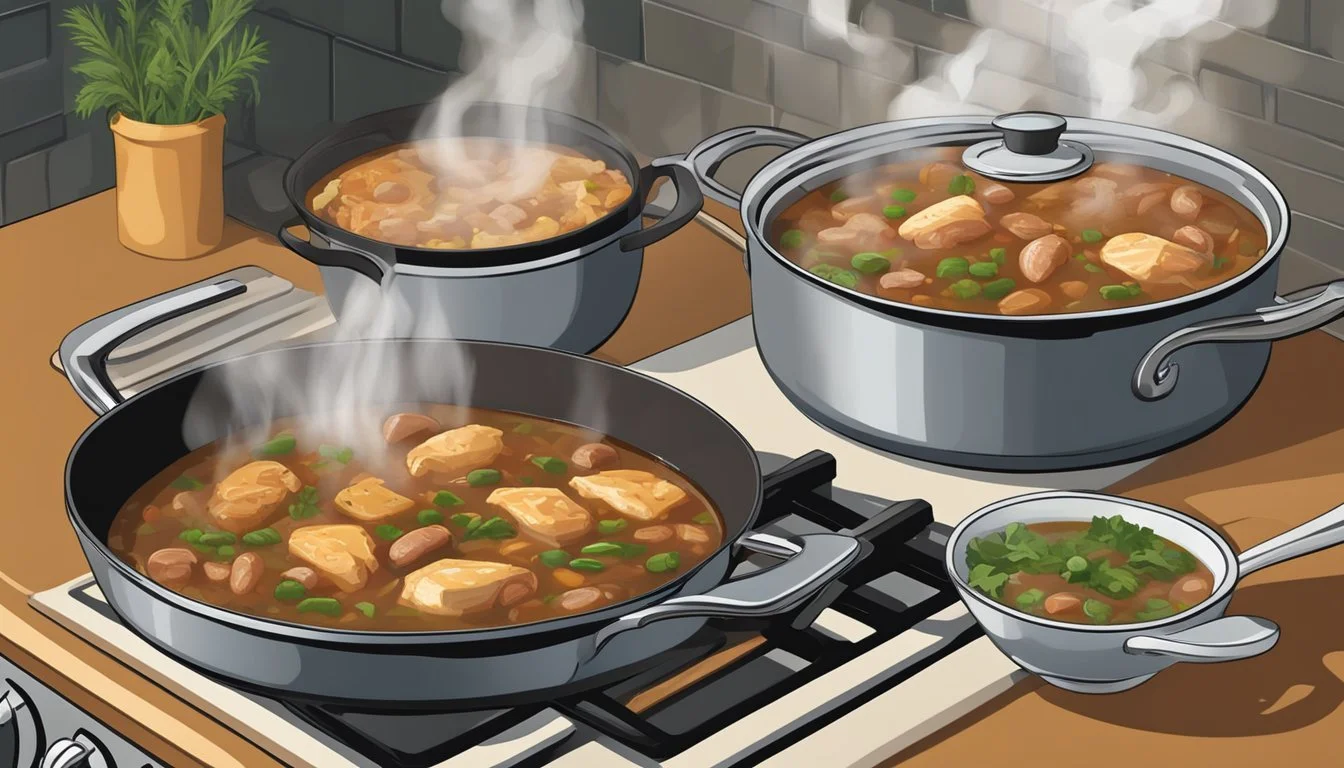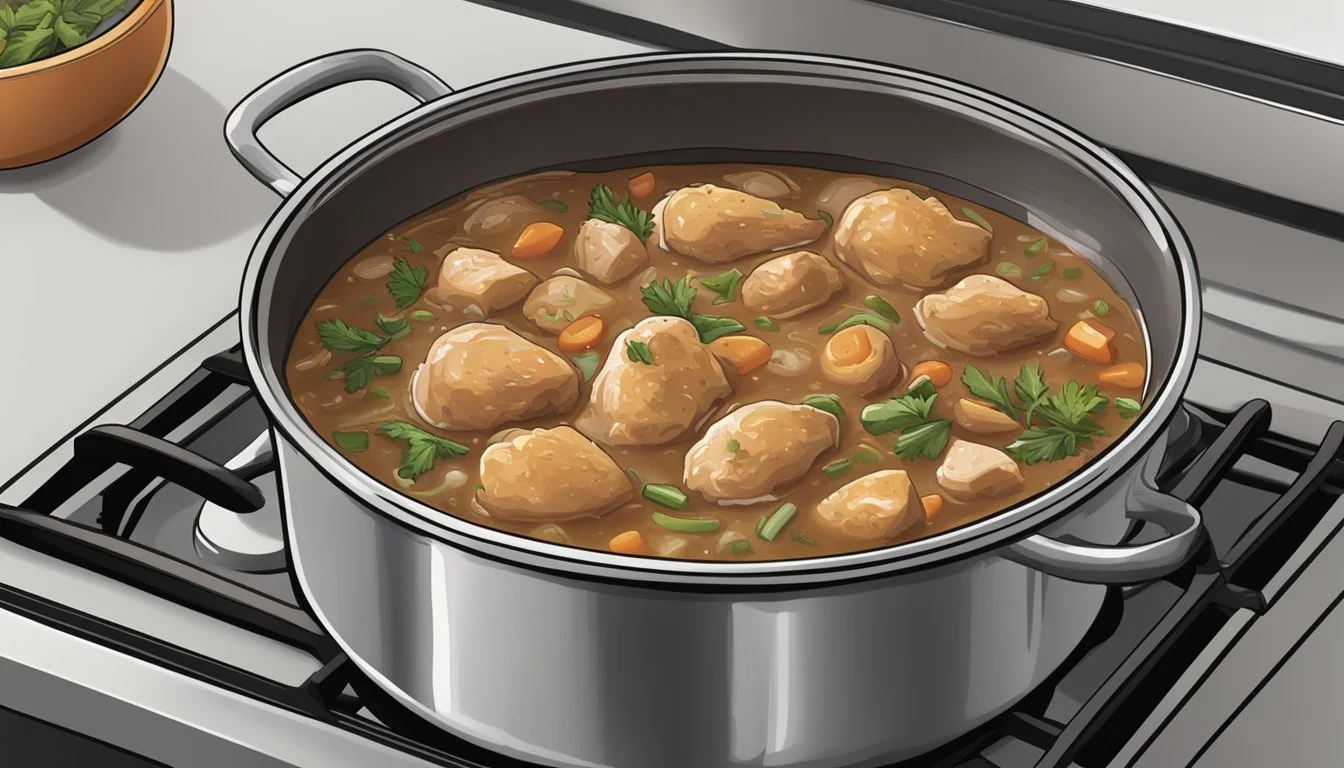Best Way to Reheat Chicken and Andouille Gumbo
Ensuring Flavorful Consistency
Gumbo, especially one that features chicken and andouille sausage, is a delightful showcase of flavors and textures with a rich cultural heritage from the heart of Louisiana. This dish, often reserved for gatherings and special occasions, is brewed in a pot of love, where every ingredient is a note in a savory symphony. To reheat gumbo properly is to respect the craft that went into its creation, ensuring that the symphony plays on just as beautifully the second time around. The key to a perfect reheated gumbo lies in maintaining the harmonious melding of flavors while bringing it to the right temperature for safe and satisfying consumption.
As gumbo sits, its ingredients continue to marry, further developing its complex profile. It contains a delicate roux at its base that has the potential to separate if not handled carefully when reheating. The objective is to warm the gumbo thoroughly without compromising the integrity of the roux or diminishing the tender juiciness of the chicken and the rich spice of the andouille sausage. Reheating requires a gentle touch and an understanding of the dish’s components to retain its essence. Whether using a microwave, stovetop, or oven, the process should ensure even heating, preventing any one part from overshadowing the others.
Understanding Gumbo
Gumbo is a rich, flavorful stew deeply rooted in the culinary traditions of Louisiana. The dish draws from Spanish, African, and French influences, resulting in a unique Creole or Cajun cuisine depending on regional variations.
Ingredients & Flavors: The depth of flavor in gumbo begins with a roux, a base made from flour and fat which acts as a thickening agent. The variety of meats such as chicken and andouille sausage, and possibly seafood, contribute to its hearty nature. The "holy trinity" of celery, bell pepper, and onions, along with garlic, forms the aromatic foundation, while okra often serves not only as a thickener but also adds a distinct texture and flavor. Tomatoes can be included as well, though typically seen in Creole versions.
Herbs & Seasonings: A symphony of bay leaves, thyme, black pepper, and cayenne pepper provides warmth and spiciness to the dish. In some versions, file powder, made from ground sassafras leaves, is stirred in at the end for added flavor and to thicken the broth further.
Broth: A well-made gumbo typically features a rich chicken broth, which allows the multitude of flavors to meld together as they simmer.
Components of Gumbo Description Roux Flour and fat cooked to a dark, nutty base Holy Trinity Celery, bell peppers, onions; sautéed vegetables Meats Chicken, andouille sausage, sometimes seafood Thickening Agents Okra or file powder Seasonings Bay leaves, thyme, black pepper, cayenne pepper
Gumbo recipes are often passed down through generations and are emblematic of the history and community in Louisiana. They share the common trait of beginning with a strong foundation and building layers of complex flavors and textures. Whether enjoyed as a celebratory meal or a comforting dish on a chilly day, gumbo is a testament to the fusion of diverse cultures and ingredients that define Louisiana's culinary landscape.
Storing and Preserving Gumbo
Proper storage of chicken and Andouille gumbo is vital in preserving its flavors and ensuring it remains safe to eat. Leftovers should be cooled down as quickly as possible to diminish the risk of bacterial growth, such as salmonella, which thrives at temperatures between 40°F and 140°F.
Cooling Down:
Divide gumbo into smaller portions.
Let it cool to room temperature for no longer than two hours.
Refrigeration:
Store gumbo in airtight containers to maintain freshness.
It can be refrigerated for 2-3 days.
Freezing:
For extended shelf life, freezing is an option.
Ensure the gumbo is at room temperature before sealing it in containers or freezer bags.
Freezing Tips Details Containers Use airtight containers or heavy-duty freezer bags Portioning Freeze in desired portions Protecting Flavor & Texture Wrap additional layer with aluminum foil Labeling Include the date to track how long it's stored
By following these guidelines, one can extend the gumbo's shelf life and enjoy it at a later date without compromising taste or safety. Remember to always thaw frozen gumbo in the refrigerator to maintain a safe temperature throughout the thawing process.
Preparation for Reheating
To ensure the chicken and andouille gumbo retains its texture and melded flavors upon reheating, one must approach the process methodically. The choice of reheating method—whether stovetop, oven, or microwave—can significantly impact the dish's moisture and consistency.
Stovetop Method:
Place the gumbo in a suitable pot.
Keep the heat low to gradually warm the gumbo, preserving its texture.
Stir occasionally to distribute heat evenly and prevent sticking.
If the gumbo thickens excessively, a small amount of liquid (water or stock) can be added to adjust the consistency.
Oven Method:
Preheat the oven to a moderate temperature, around 350°F (175°C).
Transfer gumbo into an oven-safe container, covering it to retain moisture.
Heat until the gumbo reaches a safe internal temperature of 165°F (74°C).
Stirring is not required for the oven method, as the indirect heat circulates within the sealed environment.
Microwave Method:
Choose a microwave-safe container to hold the gumbo.
Cover with a microwavable lid to minimize splatter and maintain moisture.
Reheat at medium power in one-minute intervals, stirring after each to promote even heating.
Monitor the temperature to ensure it reaches food safety requirements.
Regardless of the chosen method, it is crucial to always check the internal temperature of the gumbo with a food thermometer to confirm it has reached 165°F (74°C) for food safety. Reheating on low heat, where applicable, and the strategic addition of liquids can help maintain the gumbo's desirable qualities.
Reheating Gumbo on the Stovetop
When reheating gumbo on the stovetop, one should focus on maintaining the flavor and moisture of the dish. It's essential to heat it slowly and stir it frequently to prevent the ingredients from separating or sticking to the pot.
Stovetop Method
To reheat chicken and andouille gumbo on the stovetop, one should:
Choose the Right Pot: Opt for a heavy-bottomed pot to ensure even heat distribution during the reheating process.
Temperature Control: Set the burner to a low or medium-low heat to gradually reheat the gumbo without bringing it to a boil, which can negatively affect the roux and overall consistency.
Slow Heating: Gently pour the gumbo into the pot and allow it to reach a simmer. If the gumbo is particularly thick, adding a splash of water or chicken broth may help to thin it marginally and prevent burning.
Frequently Stir
One should:
Stir Regularly: This is crucial to make sure the gumbo heats evenly and that the bottom does not burn. It helps to maintain the even flavor and texture throughout the dish.
Monitor Consistency: As the gumbo reheats, make sure it retains its moisture and doesn't become too thick or dry. If necessary, adjust the heat or add more liquid in small increments.
Reheating Gumbo in the Oven
When reheating chicken and andouille gumbo in the oven, maintaining flavor and texture is paramount. The oven method provides an even distribution of heat that can help preserve the gumbo’s complex flavors and ensure a consistent texture throughout the dish.
Oven Method
To reheat gumbo in the oven, one should preheat their oven to a moderate temperature—350°F (175°C) is typically recommended. This gentle heating approach allows the gumbo to warm throughout without compromising its taste or structure.
Preparation: Place the gumbo in an oven-safe dish. If the gumbo appears too thick, one can stir in a bit of broth or water to return it to the desired consistency.
Covering to Retain Moisture: Covering the dish with a lid or sealing it with aluminum foil helps trap moisture, preventing the gumbo from drying out.
Reheating Times: The dish should then be placed in the center of the preheated oven for about 30-45 minutes. This duration can vary slightly depending on the quantity of gumbo and individual oven characteristics.
Safety Check: To ensure food safety, the internal temperature of the gumbo should reach 165°F (74°C). Utilize a food thermometer to verify.
Stirring for Evenness: Stirring the gumbo once or twice during the reheating process promotes heat distribution, keeping the flavors melded and the texture smooth.
By following these guidelines, one ensures that their chicken and andouille gumbo remains just as savory and enjoyable as when it was first prepared.
Using a Microwave for Reheating
When reheating chicken and andouille gumbo in a microwave, preserving the dish's texture, taste, and moisture quickly is a top priority. The microwave offers a fast reheating method, ideal for those with limited time. However, care must be taken to ensure even heating without affecting the gumbo's quality.
Steps to Reheat Gumbo in a Microwave:
Transfer the gumbo into a microwave-safe container, spreading it evenly.
If the gumbo appears too thick, add a small amount of water or chicken broth to help retain moisture.
Cover the container with a microwave-safe lid or vented plastic wrap to allow steam to escape and prevent splatter.
Heating Instructions:
Set the microwave to a medium power setting to avoid overheating.
Heat the gumbo in one-minute increments, stirring after each minute to distribute heat throughout evenly.
Tips for Best Results:
Stir thoroughly: This ensures the gumbo heats evenly and helps maintain a uniform texture.
Monitor temperature: The target is to reach at least 165°F throughout the gumbo to ensure food safety.
Rest before serving: Let the gumbo stand for a minute or two after microwaving to allow the heat to distribute further.
Pros and Cons of Using a Microwave:
Pros Cons Fast reheating Can unevenly heat if not stirred properly Convenient for single servings May not preserve texture as well as stovetop reheating Minimal cleanup —
The gumbo's flavors should remain melded and vibrant if these steps are followed meticulously, and the dish should retain the much-desired moisture despite the microwave's tendency to dry out food. It's important to adjust the microwave's power setting according to the quantity of gumbo being reheated, keeping a vigilant eye on texture and taste during the process.
Alternative Reheating Methods
Reheating Chicken and Andouille Gumbo requires careful attention to preserve its rich texture, moisture, and flavor. These alternative methods provide different benefits to suit your convenience and preference.
Slow Cooker
Using a slow cooker for reheating gumbo ensures a gentle warming process, which helps in maintaining the flavors and preventing the separation of the roux. One should transfer the gumbo into the slow cooker and set it to a low heat setting, allowing it to warm up gradually over a few hours. Stirring occasionally can help distribute heat evenly and maintain a consistent texture throughout.
Skillet
The skillet method is ideal for serving gumbo quickly while keeping it moist and flavorful. Heat a skillet on medium heat, pour the gumbo, and stir continuously to avoid sticking and to ensure even reheating. The direct heat allows for better control over the temperature, making it a quick and efficient option.
Air Fryer
An air fryer might not be the first choice for reheating gumbo, but it can work if one aims to add a slight crisp to the Andouille sausage in the gumbo. It’s essential to use an air fryer-safe container, set it to a moderate temperature, and heat in short bursts to prevent drying out the gumbo. Due to the potential for uneven heating, this method might require additional stirring and possibly a splash of broth to maintain moisture.
Maintaining Flavor and Safety
When reheating chicken and andouille gumbo, one must carefully balance the restoration of its vibrant flavors while ensuring that food safety standards are met. Proper technique is crucial to prevent the roux from separating and to keep the seasonings well-integrated.
Seasonings and Add-ins
The flavor profile of chicken and andouille gumbo hinges on the robust seasoning that typifies Cajun cuisine. To maintain the intended taste, it is essential to consider the effects of reheating on spices such as paprika, cayenne pepper, black pepper, and kosher salt. Before reheating, tasting and adjusting these seasonings can be beneficial, as some flavors may diminish in intensity over time.
Adding fresh parsley and green onions just before serving can revitalize the gumbo's layers of flavor. Since these ingredients are typically used as garnish, they are best added after reheating to preserve their texture and vibrancy.
In terms of food safety, the reheated gumbo should reach an internal temperature of at least 165°F to ensure it is safe to consume. Slowly reheating on the stove allows for a simmer that can gradually elevate the temperature without compromising the integrity of the roux or the texture of the protein, which in this case includes succulent pieces of chicken and the distinctive, smoky andouille sausage.
The use of bay leaves during the initial cooking process imparts a subtle depth that should carry through after reheating. One must take caution not to overheat and thus cause these flavors to become overly pronounced or bitter.
For enthusiasts of heat, a dash of hot sauce can be introduced after reheating to taste. It allows personalized spice levels and ensures the gumbo is vivid in taste, honoring the spirit of Cajun cuisine.
By adhering to these guidelines, one not only safeguards the original flavors of the gumbo but also observes critical food safety practices, ensuring a delightful and secure dining experience.
Serving Gumbo
When serving gumbo, the true essence of this Southern delight is best captured through proper reheating and presentation. Once gumbo is reheated to the ideal temperature, maintaining the melange of flavors is crucial, especially if the gumbo includes a variety of ingredients such as chicken, andouille sausage, shrimp, and ham. Here's how one can serve it effectively.
Temperature: Ensure that the gumbo has reached an internal temperature of 165°F for safety and quality. This can be checked using a food thermometer after reheating it on the stove or in a microwave.
Accompaniments: Serve the gumbo with a scoop of white rice, which should be heated separately to prevent it from becoming sticky. A side of crusty bread is also a staple for sopping up the flavorful broth.
Fresh Ingredients: Adding a garnish of fresh green bell peppers or chopped tomatoes can enhance the color and provide a fresh contrast to the rich flavors of the gumbo. Prepare these ingredients while the gumbo is being reheated.
Roux: A key to a flavorful gumbo is a well-prepared roux, which should have been cooked to a dark brown color initially, imparting a deep base flavor. When reheating, stir gently to blend the roux with the broth without disrupting the texture.
Final Touches: Before serving, a last-minute check for seasoning is recommended. Adjust salt and pepper if needed, but do it judiciously to avoid overpowering the complex layers of flavors in the gumbo.
By following these steps, one can serve gumbo that is as close to its authentic taste and texture as when it was first cooked.
Avoiding Common Reheating Mistakes
When reheating gumbo, particularly a flavorful one like chicken and Andouille gumbo, it is essential to maintain texture and prevent bacterial growth. Here are strategic steps to reheat the stew without losing its essence:
Temperatures: Heat to an internal temperature of 165°F to eliminate the risk of bacterial infections such as Salmonella. Use a food thermometer to check.
Bones: If your gumbo contains chicken with bones, consider removing the meat from the bones before reheating to ensure even warming through.
Stirring: Stir the gumbo occasionally while reheating to distribute heat evenly and to prevent certain ingredients from sticking and burning at the bottom of the pan.
Textures: To avoid a soggy or slimy texture, reheat the gumbo on a stovetop at a low to medium heat instead of blasting it at high temperatures.
Retention of Flavors: Utilize a slow reheating process as rapid heating can cause the flavors to separate rather than meld.
Do's Don'ts Use low-medium heat Reheat on high flames Stir occasionally Leave unattended Check temperature Guess doneness Remove chicken from bones Overcrowd the pan
Following these guidelines will ensure your gumbo retains its harmony of flavors while being safely reheated for your enjoyment.
Tips and Tricks
When reheating Chicken and Andouille Gumbo, maintaining the rich flavors and textures of the dark roux, succulent meats, and Cajun spices is paramount. It’s essential to manage the heat and reheating method to preserve the gumbo’s characteristic melded flavors.
For Stovetop Reheating:
Gently reheat on low: Place the gumbo in a pot and warm it over low heat, stirring occasionally to ensure an even distribution of warmth.
Add moisture: If the gumbo has thickened in the refrigerator, add a bit of chicken broth to attain the desired consistency.
In a Slow Cooker:
Heat slowly: Set the slow cooker on low and allow the gumbo to gradually come up to temperature, which may take a few hours but will help the flavors to stay intact.
Using a Microwave:
Reheat in intervals: Microwave on medium power in one-minute intervals, stirring between each to avoid hot spots.
For Andouille sausage and chicken:
Protect the moisture: When reheating pieces of boneless, skinless chicken and pork sausage like Andouille, it's vital to cover them to keep the moisture in. Consider using a damp paper towel over the dish in the microwave or a lid when using a skillet.
Ingredient Reheating Tip Bell Pepper Sauté in a skillet to invigorate the crisp texture. Roux If separating, whisk gently on the stovetop to combine. Filé Powder Sprinkle after reheating to maintain flavor.
Lastly, consider the spice levels. Creole and Cajun dishes like gumbo, as well as similar dishes such as jambalaya, are known for their bold, spicy flavors, which may intensify after reheating. Taste and adjust seasonings like ground black pepper or filé powder as needed. Always remember to bring the gumbo to an internal temperature of 165°F to ensure safety and the best quality.

